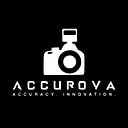The Ethics of Photo Manipulation: Navigating the Boundaries of Acceptability
In the digital age, photo manipulation has become a common practice in the world of photography, raising significant questions about ethics and authenticity. With advanced software like Adobe Photoshop, altering images has never been easier, but it also presents challenges regarding the truthfulness and integrity of a photograph. This article delves into the ethical considerations of photo manipulation, exploring what is considered acceptable and where the line should be drawn.
Understanding Photo Manipulation
Photo manipulation involves altering a photograph using various techniques and tools, often digital, to change the appearance of the image. This can range from basic edits like color correction and cropping to more significant alterations like adding or removing elements from the image.
Ethical Considerations in Photo Manipulation
- Journalism and Documentary Photography: In fields like photojournalism and documentary photography, the expectation is to present an accurate depiction of reality. Manipulation that alters the factual content of the image is considered unethical.
- Commercial and Art Photography: In commercial photography, advertising, and fine art, there is more leeway for creative expression through photo manipulation. However, even in these fields, misleading viewers, especially in advertisements, can be problematic.
- Portraits and Body Image: Manipulating portraits, especially in ways that alter a person’s body size or shape, can contribute to unrealistic body standards and have ethical implications regarding self-image and mental health.
The Impact of Photo Manipulation
- Public Trust: Excessive or undisclosed manipulation can lead to a loss of trust in photography as a medium, particularly in journalism.
- Perception of Reality: Manipulated images can distort viewers’ perception of reality, especially when the alterations aren’t disclosed.
Best Practices for Ethical Photo Manipulation
- Disclosure: When significant manipulation is done, especially in editorial or journalistic contexts, it’s often best practice to disclose it to the audience.
- Purpose and Context Consideration: The purpose and context of the photograph should guide how much manipulation is acceptable. Understanding the expectations of the audience and the norms of the genre is crucial.
- Moderation: In many cases, moderation is key. Subtle enhancements that don’t drastically alter the reality of the image are often more ethically acceptable.
Photo manipulation remains a contentious issue in photography, with the boundaries of acceptability varying across different fields and contexts. The key lies in finding a balance between creative expression and maintaining the integrity and truthfulness of the photographic image. As photographers and visual storytellers, understanding and respecting ethical guidelines is essential in maintaining the trust and credibility of the medium.
This article explores the ethical considerations surrounding photo manipulation in photography. As the line between reality and alteration becomes increasingly blurred, understanding the ethical implications and maintaining transparency becomes crucial in preserving the integrity of photography as a medium.
#PhotoManipulation #PhotographyEthics #DigitalEditing #VisualIntegrity #AdobePhotoshop #PhotographyDebate #EthicalPhotography #ImageEditing #RealVsEdited #Accurova #AccurovaAI #PhotographyStandards #EthicsInPhotography #TruthInPhotography
